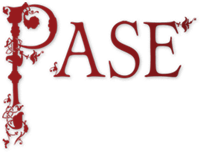Table of Contents
Top of page
Name
Summary
Distribution Map
Property List
Profile
Bibliography
Bottom of page
Leodmær 7
Leodmær ‘head-priest of Clare’ (Suff.), fl. 1066
Male
DWP
4 of 5
Summary
Leodmær 7 was the head-priest of a minster at Clare in Suffolk, where the clerics held 24 carucates TRE with a value of £40; Leodmær also held two estates in Essex TRE with a combined assessment of 5 hides and a value of £16.Distribution map of property and lordships associated with this name in DB
List of property and lordships associated with this name in DB
Holder 1066
| Shire | Phil. ref. | Vill | DB Spelling | Holder 1066 | Lord 1066 | Tenant-in-Chief 1086 | 1086 Subtenant | Fiscal Value | 1066 Value | 1086 Value | Conf. | Show on Map |
|---|---|---|---|---|---|---|---|---|---|---|---|---|
| Essex | 20,77 | Bendysh Hall | Ledmarus | Leodmær, head-priest of Clare | - | Eustace, count | - | 4.50 | 11.00 | 12.00 | C | Map |
| Essex | 23,4 | Gestingthorpe | Ledmarus | Leodmær, head-priest of Clare | - | Richard fitzGilbert | William Pecche | 0.50 | 5.00 | 7.00 | B | Map |
| Totals | ||||||||||||
Lord 1066
| Shire | Phil. ref. | Vill | DB Spelling | Holder 1066 | Lord 1066 | Tenant-in-Chief 1086 | 1086 Subtenant | Fiscal Value | 1066 Value | 1086 Value | Conf. | Show on Map |
|---|---|---|---|---|---|---|---|---|---|---|---|---|
| Suffolk | 25,1 | Clare | Ledmarus | Wihtgar son of Ælfric | Leodmær the priest | Richard fitzGilbert | - | 24.00 | 40.00 | 40.00 | B | Map |
| Totals | ||||||||||||
Profile
Leodmær 7 is described in DB as ‘a certain priest Leodmær’ who with others (unnamed) was appointed to a minster at Clare, in south-west Suffolk and dedicated to St John, on its foundation by Ælfric 113 son of Wihtgar 9. The charter confirming this foundation (noted in the narrative of the DB entry for Clare) has not survived, but a date of c.1045 has been suggested for it (Rumble 1983: 23,4 Notes). DB records that Ælfric then put the minster into the protection of Abbot Leofstan 24 of Bury and of his own son Wihtgar (Wihtgar 10). After the Conquest, however, King William (William 1) took possession of Clare and it passed, along with many other of Wihtgar’s TRE estates, to Richard fitzGilbert (Richard 5).The DB narrative records that the TRE clerics ‘could not grant this land or alienate it from St John’; but it does not explicitly state that Leodmær 7 was the head-priest of Clare minster nor that he was still present there or even alive in 1066. Nevertheless, both suggestions are rendered likely because no other member of the Clare clergy is given a name in DB and no other priest is mentioned, which implies that Leodmær was regarded as the most significant TRE member of the community in 1086.
The only other DB entries for which the TRE holder combines the unusual name Leodmær with the title of ‘priest’ relate to estates at Bendysh (Hall) and Gestingthorpe, which lie less than 13 miles apart from each other in north Essex and only 10 and 5 miles respectively from Clare. Like Clare, Gestingthorpe had also passed to Richard 5 after the Conquest; and even though Bendysh passed to a different TRW successor (Eustace 1) it is very probable that both Essex estates were held by the same person TRE and that that person was the same as the head-priest of Clare, Leodmær 7. If so, then this also confirms that Leodmær 7 was still alive (and presumably was still the head-priest of Clare) at the time of the Conquest.
It is not known if these two Essex manors represent Leodmær’s private estates or were further parts of Clare minster’s endowment. However, the fact that one of them passed to Eustace 1 after the Conquest raises the possibility that Leodmær 7 was the same person as Leodmær 12, who held three estates in north Essex (in a tight cluster between Clare and Gestingthorpe) and one in south-east Suffolk TRE and all of which were held by Eustace 1 or his subtenants in 1086. The shared unusual name, the shared TRW successor and the close proximity of some of their estates could all point to Leodmær 7 and Leodmær 12 being the same person. Yet DB consistently describes Leodmær 7 as a ‘priest’ and Leodmær 12 as a ‘free man’, and the consistency of these qualifiers suggests that a distinction was being made between two individuals. The balance of probability, therefore, is that Leodmær 7 and Leodmær 12 were different people.
Bibliography
Rumble 1983: A. R. Rumble, ed., Domesday Book 32: Essex (Chichester, 1983)
